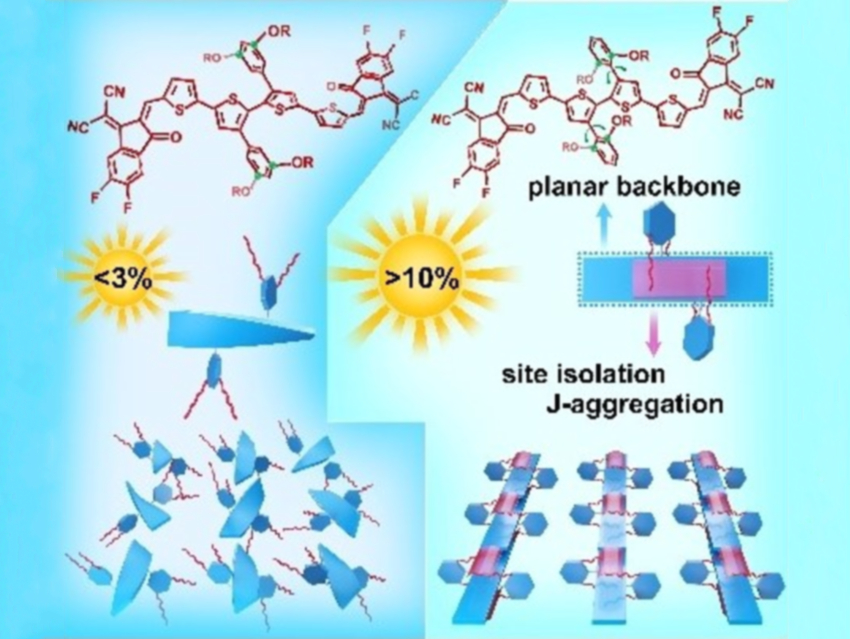The photovoltaic performance of organic solar cells has significantly improved in recent years. Cells based on fused-ring electron acceptors (FREAs), for example, have improved the power conversion efficiency of organic solar cells to 16 %. However, the synthesis of FREAs is usually complicated and expensive due to their multi-ring-fused core unit, which limits their commercial application. Simpler and cheaper electron acceptors, e.g., non-fused ring acceptors, could solve this issue.
Yahui Liu, Qingdao University, China, Zhishan Bo, Qingdao University and Beijing Normal University, China, and colleagues have developed an efficient design for high-performance fully non-fused ring acceptors. The team synthesized two acceptors, o-4TBC-2F and m-4TBC-2F (pictured below). Compared with typical FREAs, the syntheses of non-fused ring acceptors avoids ring-closing reactions that usually result in low yields, which makes the preparation of the acceptors simple and cost-effective.

By changing the location of alkyloxy side chains, the researchers can control the molecular structure and the aggregation behavior. The non-fused ring acceptor o-4TBC-2F with ortho-hexyloxy side chains has a planar backbone, while m-4TBC-2F has a twisted backbone. The planar structure of the ortho-substituted variant leads to higher crystallinity and facilitates intermolecular π-π interactions and charge transport. A power conversion efficiency of 10.26 % is obtained for devices based on o-4TBC-2F, which is one of the highest values for fully non-fused electron acceptors.
- A De Novo Design of Fully Non-fused Ring Acceptor with Planar Backbone and Near-IR Absorption for High Performance Polymer Solar Cells,
Zhishan Bo, Ya-Nan Chen, Miao Li, Yunzhi Wang, Jing Wang, Ming Zhang, Yuanyuan Zhou, Jianming Yang, Yahui Liu, Feng Liu, Zheng Tang, Qinye Bao,
Angew. Chem. Int. Ed. 2020.
https://doi.org/10.1002/anie.202010856



